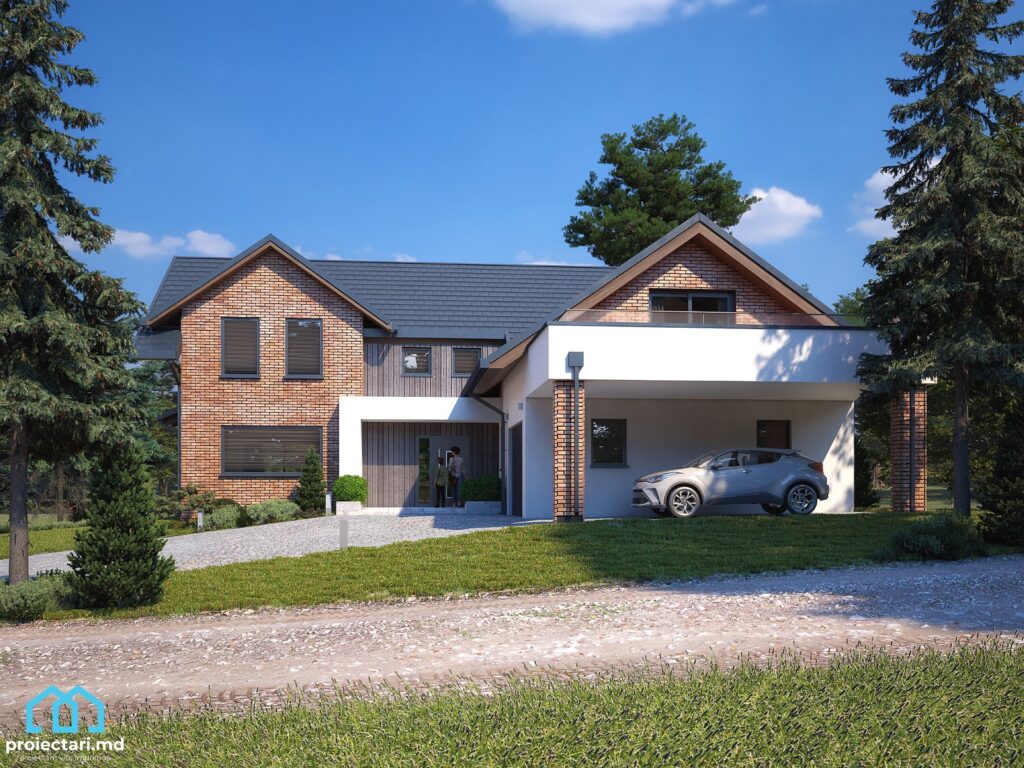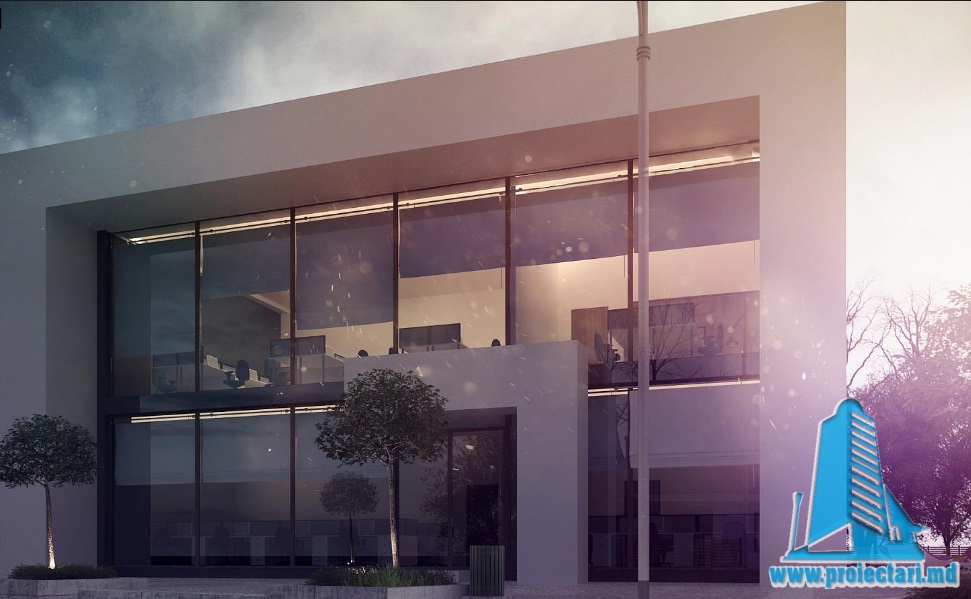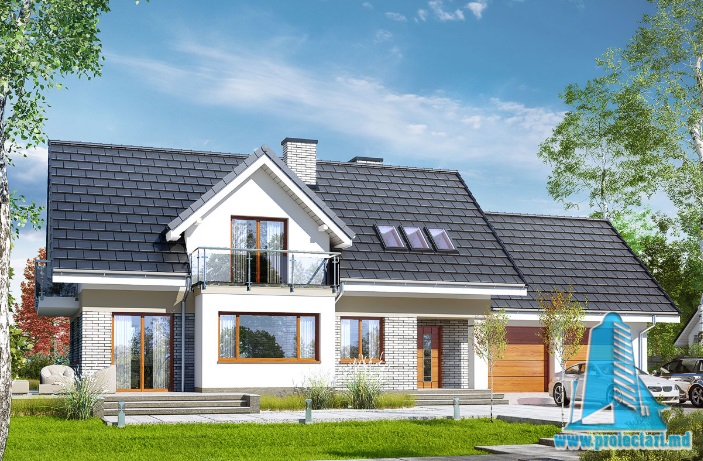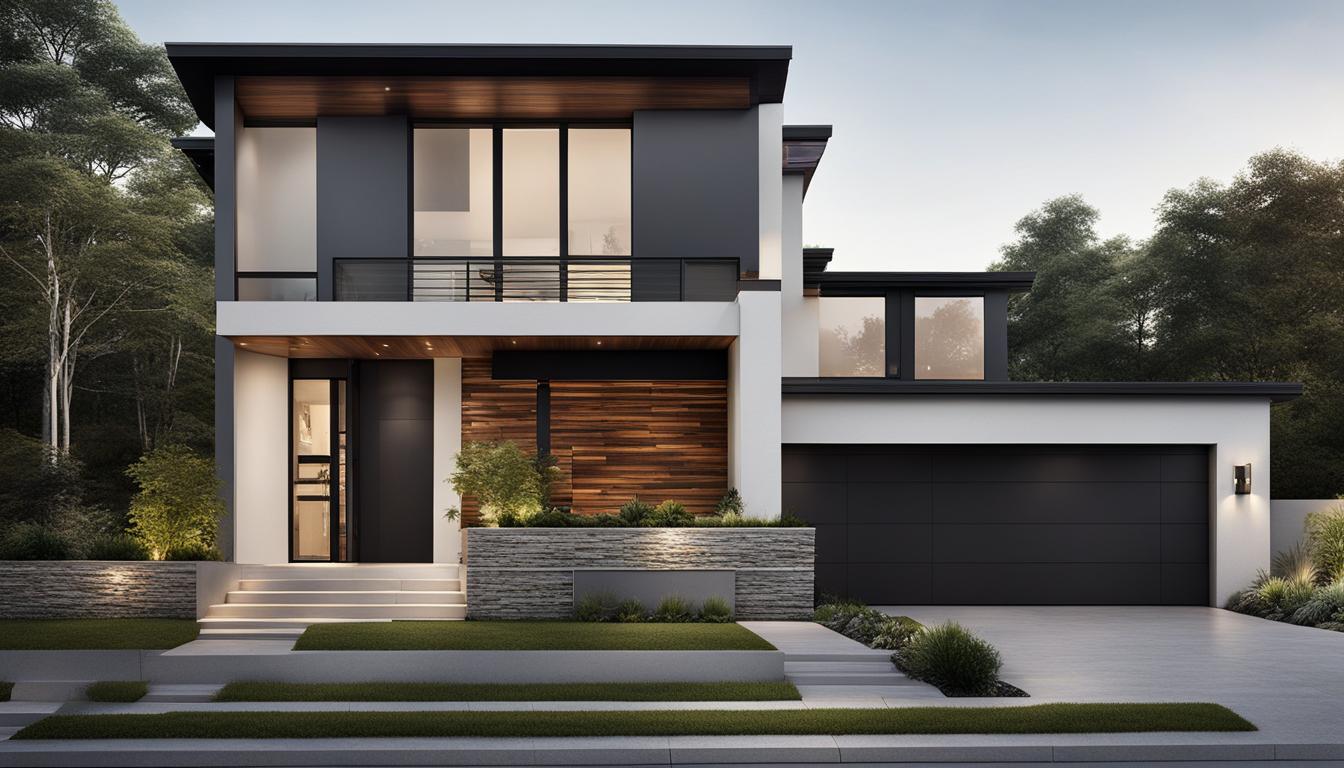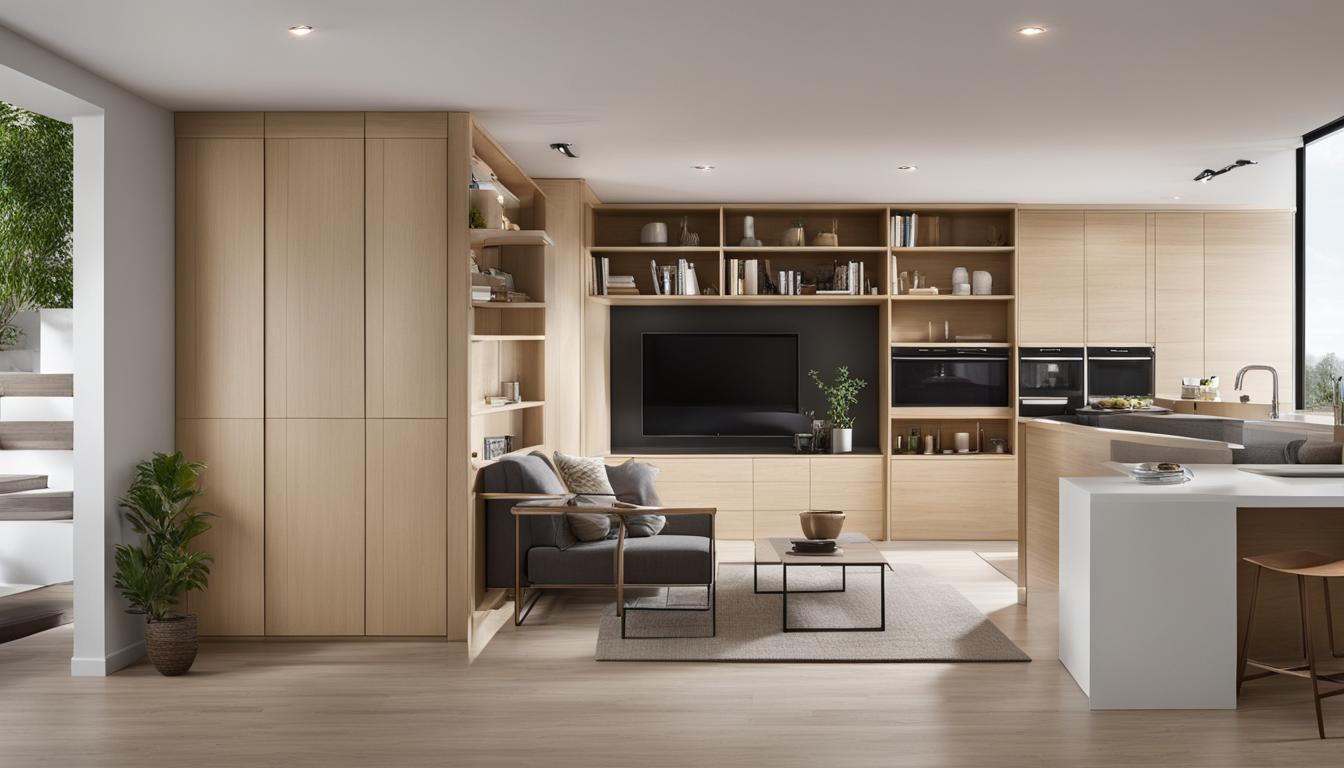Discover unique house projects that combine modern architecture with the natural landscape in a perfect symbiosis. These construction and interior design projects succeed in creating modern and comfortable living spaces that blend harmoniously into their surroundings.
From designing and building modern homes, to interior design and home renovations, these projects cater to those looking for a truly special home. Whether it’s family-owned homes or luxury villas, beautiful architecture and advanced technologies combine with natural elements , such as natural light and sustainable materials , to provide a welcoming and comfortable environment.
These modern house projects prove that it is possible to live in a contemporary setting, with all the necessary amenities, without compromising the beauty and integrity of the surrounding environment. With a carefully thought out design and an eco-friendly approach, these houses represent innovative solutions for those who want to live in harmony with nature.
Key points:
- Modern house designs integrate architecture with the natural landscape, offering harmonious and comfortable living spaces.
- The use of sustainable materials and eco-friendly technologies is a key feature in modern constructions.
- The interior design of these houses reflects elegance and functionality, combining modern comfort with natural elements .
- With an emphasis on harmonious integration into the environment, these house projects prove that it is possible to live in a contemporary and eco-friendly environment.
- Home renovations can preserve the natural character of the home, adding authenticity and beauty.
The Importance of Architectural Integration in the Natural Environment
The integration of architecture into the natural environment is essential to create house projects harmonious with the landscape. When homes are designed and built in harmony with the environment, benefits are achieved on multiple levels. Ecological and sustainable constructions bring a series of advantages that are not only limited to the impact on the environment, but also on the quality of life of their inhabitants.
“Architectural integration into the natural environment allows us to create living spaces that do not juxtapose with the landscape, but merge with it, respecting and capitalizing on the existing natural elements.It is a way to bring the beauty of nature into our homes, thereby creating an environment where people can live and connect with their surroundings in a harmonious way.”
Sustainable and integrated house projects in the natural environment are designed considering aspects such as:
- The use of ecological and recyclable materials for sustainable and environmentally friendly constructions.
- Emphasis on energy efficiency and reducing the consumption of natural resources.
- Improving air quality and thermal comfort through intelligent building design.
- Harmonious integration of constructions into the natural landscape to achieve a pleasant aesthetic and simulation of space.
Thus, the integration of architecture into the natural environment not only creates beautiful and functional houses, but also brings significant benefits to the environment and the quality of life of their inhabitants. Therefore, it is important to promote and develop sustainable and ecological house projects that focus on the harmonious interaction between architecture and nature.

| The Benefits of Architectural Integration in the Natural Environment |
|---|
| It provides a healthy and comfortable living environment |
| Reducing the impact on the environment |
| Promoting the use of renewable resources |
| Increasing the energy efficiency of buildings |
| The architectural balance between nature and technology |
Balance between Modern Comfort and Natural Elements
This section focuses on finding the balance between modern comfort and natural elements in house designs. The use of sustainable materials in construction plays a crucial role in creating a living environment in harmony with nature. A clever combination of interior and exterior design can successfully reflect the beauty and essence of the natural landscape in which the house is located. In addition, the incorporation of eco-friendly technologies brings multiple benefits to both the residents of the house and the environment.
Use of Sustainable Materials in Construction
An essential aspect in house projects is the use of sustainable materials in construction. These materials are designed to minimize the negative impact on the environment and promote sustainability and energy efficiency. For example, heat and sound insulating materials from renewable sources can contribute to creating a comfortable and healthy environment in the home. Thus, sustainable materials not only protect the environment, but also provide a superior experience in terms of home comfort.
House projects. Interior Design That Reflects the Exterior
Interior design is a way to reflect the beauty and style of the outdoors inside the home. Integrating natural elements into interior design, such as wood, stone or indoor plants, can help create a warm and welcoming atmosphere. Also, choosing the right colors and textures can bring elements of the natural environment into every room of the house. Through such approaches, residents can enjoy a relaxing and harmonious interior that successfully complements the beauty of the outdoor landscape.
Incorporation of Eco-friendly Technologies
In order to create sustainable house projects , it is important to incorporate eco-friendly technologies. These can include renewable energy systems, water recycling systems, energy efficient lighting systems and more. For example, solar panels can be used to generate clean and free electricity, helping to reduce energy consumption and protect the environment. Such eco-friendly technologies integrate innovation and modern comfort in house designs, while promoting sustainability and environmental protection.
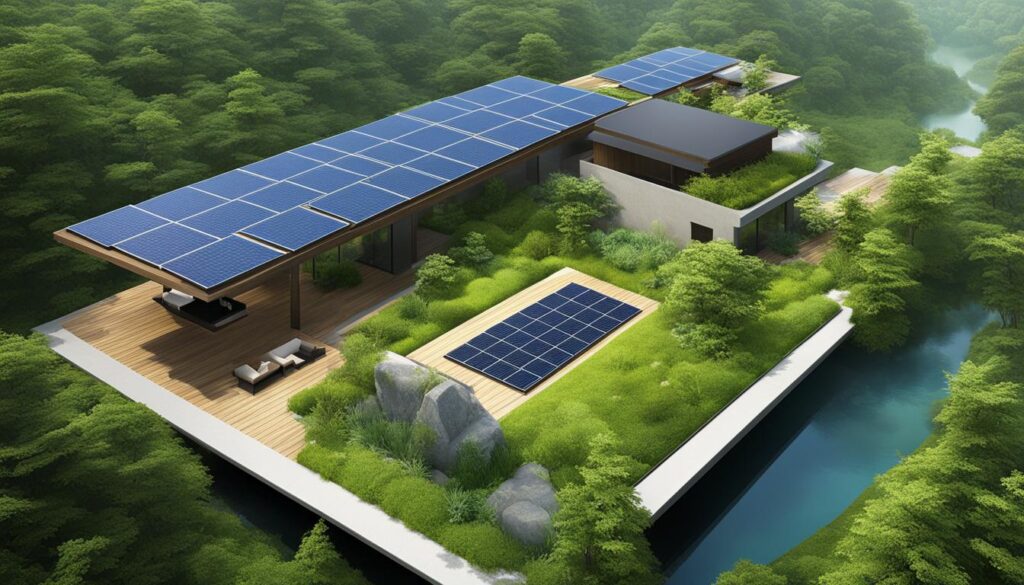
| Sustainable Materials | Design Interior | Tehnologii Eco-friendly |
|---|---|---|
| Use of recyclable and biodegradable materials | Integrating natural elements and colors inspired by nature | Using solar panels to generate electricity |
| The use of wood from sustainable sources | The use of plants and natural materials for decoration | Smart energy and water management systems |
| Use of energy-efficient thermal and sound insulation | Use of natural lighting and energy efficient LED lights | Water recycling and filtration systems |
Home Projects With Ecosystemic Vision
This section is dedicated to house projects that have an ecosystem vision , emphasizing sustainability and harmonious integration into the environment . These projects aim to create sustainable and nature-friendly living spaces, exemplifying innovative approaches in ecological construction .

Specific Design Elements for Homes Surrounded by Nature
Arranging a home in harmony with nature is a growing concern these days. The design of these homes focuses on harnessing and integrating natural beauty inside and out. The use of natural light, open spaces and outdoor landscaping are specific design elements for homes surrounded by nature, which bring both aesthetic and functional benefits.

Use of Natural Light and Open Spaces
An essential aspect in the design of houses surrounded by nature is the maximum use of natural light. Large windows, high and open ceiling, as well as transparent materials such as glass, allow natural light to enter the interior of the house, thus creating a bright and pleasant atmosphere. Open spaces, such as living and dining areas that extend to terraces or gardens, complete this experience, connecting the inside with the outside and facilitating contact with nature.
Home Designs with Exterior Designs That Compliment the Landscape
The exterior design of homes surrounded by nature is designed to blend harmoniously with the surrounding landscape. The constructions are integrated with the environment, using forms and materials that merge with the natural elements and become an extension of them. The colors and textures chosen for the exterior of the houses are inspired by the landscape, so as to create a perfect symbiosis between construction and nature.
Exterior Designs with Reduced Impact on the Environment
In order to reduce the impact of construction on the environment, the exterior arrangements of houses surrounded by nature are designed to be sustainable and ecological. The use of native plants in the gardens, the use of water recycling systems, as well as the integration of eco-friendly elements, such as solar panels or rainwater collectors, are just a few examples of how to achieve an exterior design with a low impact on the environment .
The House as an Extension of the Landscape: Case Studies
This section presents case studies that exemplify the concept of the house as an extension of the landscape . These projects have been designed to blend harmoniously with their surroundings, emphasizing integrated design and maximizing the surrounding natural beauty.
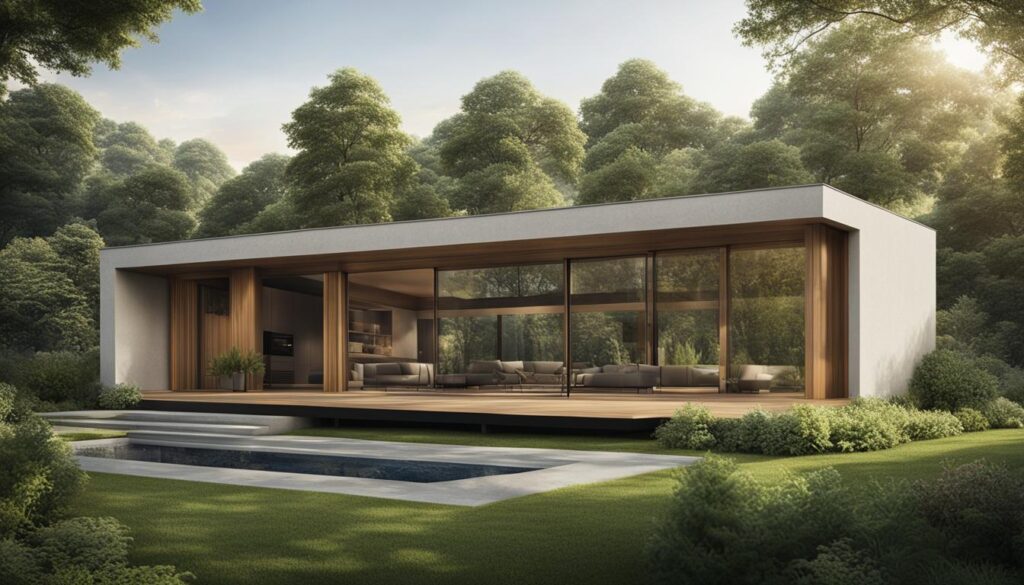
To illustrate these concepts, we have selected two outstanding projects that exemplify how a house can be designed in harmony with the natural landscape.
“House of Serenity” is a house project located in a picturesque setting, surrounded by forest and mountains.The architect worked meticulously to integrate every detail of the house into the surrounding nature.The rustic design and natural materials used complement the landscape, turningthe houseinto an organic extension of the surrounding environment.
“Refugiul Luminii” is another house project that perfectly illustrates the concept of the house as an extension of the landscape.Using glass and wood, this house offers a spectacular panorama of the mountain and the valley, creating a continuous visual connection between the interior and the surrounding landscape.
These case studies are just a few examples of the many house projects that demonstrate how a house can be designed and integrated in harmony with nature. Integrated design and maximizing the beauty of the landscape can transform an ordinary house into an authentic and inspirational retreat for its inhabitants.
House projects. The challenges of building in harmony with nature
Urban Planning and Construction Regulations
Building in harmony with nature implies compliance with town planning and construction regulations. These regulations are established to ensure the construction and development of housing projects in a sustainable and environmentally friendly way. Norms regarding inclusion in general urban plans, the use of sustainable materials and the analysis of the impact on the landscape are just a few examples of important regulations to build houses in harmony with nature.
House projects. Adaptation to Specific Meteorological Conditions
Another crucial aspect in building in harmony with nature is the adaptation of house projects to the weather conditions specific to the area where they are located. By taking into account climatic factors such as extreme temperatures, heavy rainfall or exposure to wind, designs can be designed and built to ensure maximum comfort and protection against weather variations. The use of appropriate materials and technologies can contribute to the creation of weather-resistant houses adapted to the local climate.
Long-Term Durability Solvency
One of the key principles of building in harmony with nature is the adoption of long-term sustainability solutions. These solutions include the use of sustainable materials and green construction techniques, which reduce the impact on the environment and ensure the long-term sustainability of house projects. From the integration of renewable energy systems and rainwater recycling to the use of recyclable materials and efficient insulation, sustainability solutions contribute to the creation of environmentally friendly homes that can be maintained over time. These projects of houses integrated into the natural environment exemplify a responsible and sustainable approach in construction.

Home Renovations: How to Preserve Natural Character
Home renovations can bring new life to the home and add aesthetic and functional value to the space. However, when carrying out renovations, it is important to preserve the natural character of the house so that it fits perfectly into its surroundings.
One of the key aspects of home renovations is restoring the original features. Whether it’s wood paneling, historic windows or authentic floors, preserving these elements brings a special authenticity and maintains the natural character of the home.
Interior design also plays an important role in preserving the natural character of the home. Choosing the right colors and materials can accentuate the authentic look of the space and create harmony with the surroundings. Opt for natural materials such as wood, stone or ceramics, and avoid overfitting or overly modern styles, which can distort the original character of the house.

In addition to restoration and interior design , improving energy efficiency and implementing sustainable solutions can also be an important part of renovations that preserve the natural character of the house. Choose environmentally friendly and efficient materials, such as thermal insulation and insulating glass, and consider using renewable energy to supply electricity and heat the house.
Preserving the natural character of the house during renovations is essential to create a living space with an integrated design and a harmonious connection with the environment. Whether you restore original features or choose natural and sustainable materials, understanding and respecting the character of the home will help achieve a truly unique and authentic home.
Restoration of original elements
Preserving and restoring the original elements of the house, such as wainscoting, windows and floors, helps to preserve the natural character of the home.
Authentic interior design
Choosing the right colors, materials and interior design style can accentuate the authentic look of the home and create harmony with its surroundings.
Sustainable and energy efficient solutions
The implementation of sustainable solutions, such as thermal insulation and the use of renewable energy, can contribute to the creation of a natural and energy-efficient home.
Guidelines for Designing Modern and Ecological Houses
As we have seen in the previous sections, the design of modern and ecological houses involves their harmonious integration into the natural environment. In this section, we will explore the basic guidelines and principles behind this creative and sustainable process.
Basic Principles in Ecological Design
Ecological design aims to minimize the negative impact on the environment and maximize the energy efficiency of buildings. Some key principles in green design include:
- Use of sustainable and recyclable materials in construction
- Efficient use of natural resources such as sunlight and renewable energy
- Minimizing waste and pollution generated by construction and operation
- Incorporation of rainwater recycling and capture systems
- Creating a healthy and non-toxic indoor environment for occupants
Integration of Bioclimatic Elements in Projects
Bioclimatic elements refer to the use of the natural characteristics of the environment in the design of buildings, in order to optimize energy efficiency and create increased thermal comfort. Some examples of bioclimatic elements include:
- Orientation of the house to maximize sun exposure and benefit from natural shade during the summer
- Using materials with high thermal capacity to maintain a constant temperature inside
- Protecting the building from wind and creating buffer zones to avoid heat loss
- Using vegetation and water elements to create a comfortable climate around the house
The Importance of Green Spaces and Biodiversity in House Projects
Green spaces and biodiversity are essential aspects of modern and ecological house projects. Integrating green areas into the exterior design of a house brings multiple benefits, such as:
- Improving air quality by filtering and releasing oxygen
- Reducing the urban island effect and high temperatures by creating shadows and natural cooling
- Creating relaxing and aesthetic spaces for occupants
- Protecting local habitat and promoting biodiversity by cultivating native plants and creating shelters for animals
Therefore, in the design of modern and ecological houses, special attention must be paid to the proper integration of green spaces and the promotion of biodiversity in the surroundings of the house.

In conclusion , designing modern and ecological houses involves respecting the basic principles of ecological design, integrating bioclimatic elements and paying the necessary attention to green spaces and biodiversity. Therefore, they will be sustainable homes that help protect the environment and provide a harmonious habitat for the occupants.
House projects – Conclusion
In conclusion , house projects that embrace the natural landscape represent an innovative and sustainable approach in architecture. These projects have demonstrated the essential importance of integrating architecture into the natural environment, bringing numerous benefits to both the environment and its inhabitants.
The harmony between architecture and nature is essential in creating a living space that is unique and integrated in its environment. The use of sustainable materials in construction, the interior design that reflects the exterior and the incorporation of eco-friendly technologies are key aspects in the realization of these projects. They not only create a comfortable and modern living environment, but also contribute to the preservation and protection of the environment.
Home projects that have an ecosystem vision demonstrate the importance of sustainability and harmonious integration into the environment. They exemplify innovative approaches in green and sustainable construction, emphasizing the intelligent use of resources and minimizing environmental impact.
Specific design for homes surrounded by nature, such as the use of natural light, open spaces, exterior design that compliments the landscape, and exterior landscaping with a low environmental impact , are essential elements in creating homes that are integrated and in harmony with nature.
Projects of houses in nature. FAQ
What are the benefits of house projects integrated into the natural landscape?
House projects integrated into the natural landscape offer a perfect refuge in the authentic setting of nature, creating a unique living space integrated into the surrounding environment. They offer a comfortable living experience connected to the natural elements and promote an eco-friendly lifestyle.
Why is the integration of architecture in the natural environment important to ecological constructions?
The integration of architecture in the natural environment in ecological constructions is important because it creates houses in harmony with the landscape, while respecting the environment. This integration contributes to sustainability , the creation of a healthy environment and a more pleasant living experience.
How to achieve a balance between modern comfort and natural elements in house designs?
A balance between modern comfort and natural elements in house projects can be achieved by using sustainable materials in construction, by interior design that reflects the exterior and by incorporating eco-friendly technologies. These elements contribute to the creation of a harmonious living environment that integrates nature in a beautiful and functional way.
Why are specific design elements important for homes surrounded by nature?
Specific design elements for homes surrounded by nature are important because they bring nature inside the home and create a harmonious connection between the inside and the outside. The use of natural light and open spaces, exterior design that compliments the landscape and exterior landscaping with a low environmental impact help create a pleasant atmosphere and maximize the surrounding natural beauty.
What are the challenges of building in harmony with nature and how can they be overcome?
The challenges of building in harmony with nature include complying with planning and building regulations, adapting to specific weather conditions and identifying long-term sustainability solutions. These challenges can be overcome through careful planning, collaboration with specialists and the implementation of ecological techniques and materials, which ensure the harmonious integration of the building into the natural environment.
How can the natural character of a house be preserved during renovations?
To preserve the natural character of a house during renovations, it is recommended to restore and preserve original elements, use natural materials and interior design that respects authenticity and harmony with the environment.
What guidelines are there for designing modern, green homes?
For the design of modern and ecological houses there are guides that include the basic principles in ecological design, the integration of bioclimatic elements in projects and the importance of green spaces and biodiversity. These guidelines make it easy to create sustainable and environmentally friendly homes.
What is the general conclusion about house projects integrated into the natural landscape?
The general conclusion about house projects integrated into the natural landscape is that they capitalize on the harmony between architecture and nature, offering a perfect refuge in the authentic setting of nature. These projects contribute to the creation of sustainable, comfortable and environmentally integrated homes.







